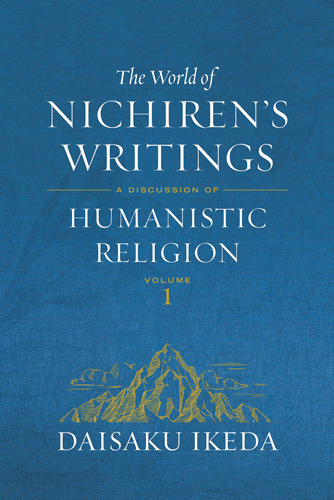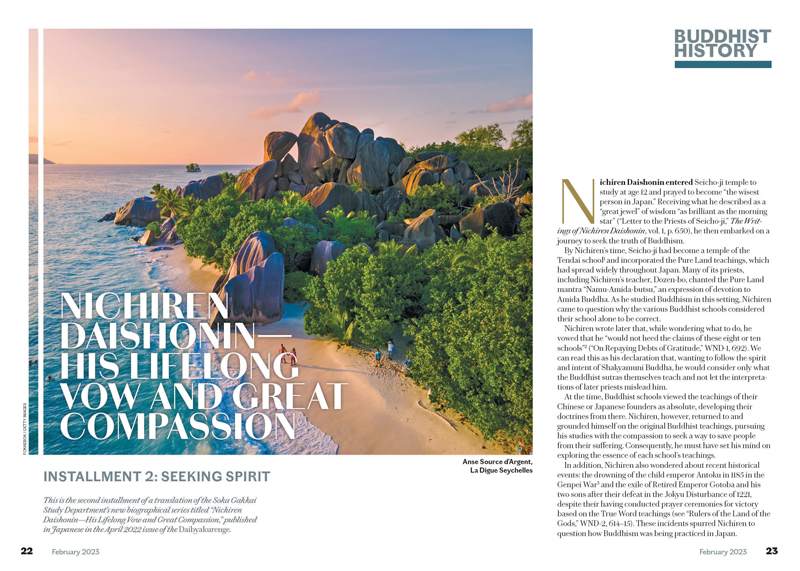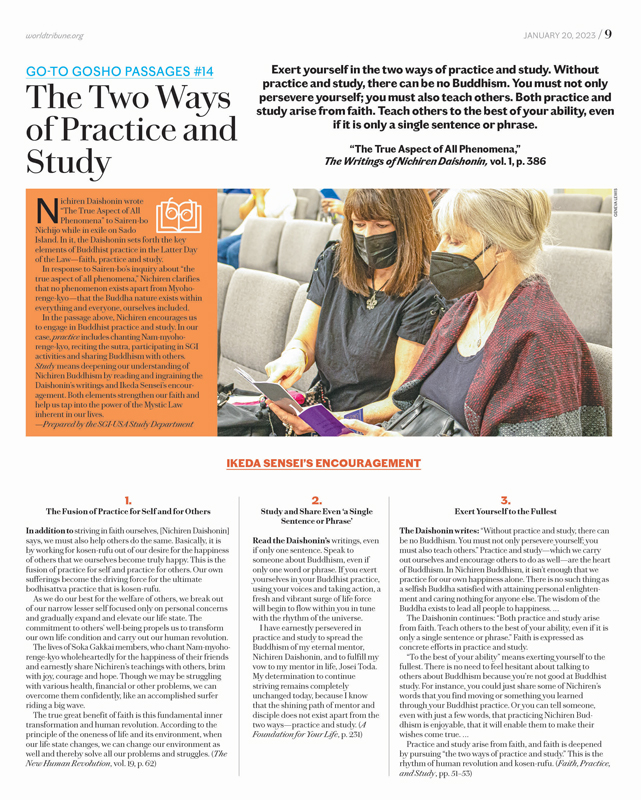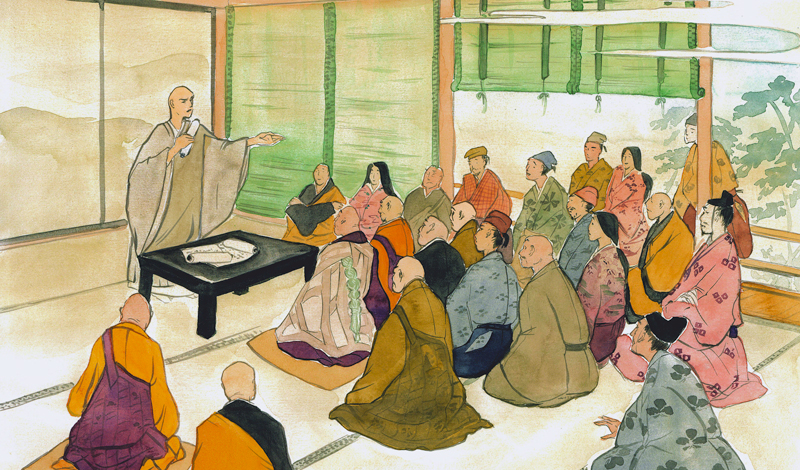Nichiren Buddhism begins with the belief that all living beings have the potential to achieve enlightenment.
In 13th-century Japan, Nichiren Daishonin defined the universal Law that can unlock this unsurpassed potential in one’s life as Nam-myoho-renge-kyo. What’s more, he gave the Law concrete expression by inscribing it in the form of a mandala, known as the Gohonzon, so that people could manifest the Buddha wisdom and attain enlightenment under any circumstance and in any age.
This month, in commemoration of the 801st anniversary of Nichiren Daishonin’s birth, we take a look at the life and legacy of Nichiren Daishonin, the Buddha of the Latter Day of the Law.
Nichiren Daishonin was born on Feb. 16, 1222, in Kataumi, a small village on the eastern coast of Awa province in present-day Chiba prefecture. His family were fishermen, considered among the lowest class in Japan.
Nichiren was moved by the plight of ordinary people as seen in the daily hardships they experienced in his village. This concern for human suffering was a profound motivational force in his efforts to grasp the heart of Buddhist doctrine. In one of his letters, he describes how, from the time he was a child, he had prayed to “become the wisest person in all Japan.”[1]
At 12, he began his schooling at a local temple called Seicho-ji and formally entered the priesthood at 16. He then traveled across Japan and studied the teachings of the major Buddhist schools. After some 10 years of study, he concluded that the Lotus Sutra represented the heart of the Buddha’s enlightenment.
At 32, the Daishonin returned to Seicho-ji where, on April 28, 1253, he chanted Nam-myoho-renge-kyo publicly for the first time, proclaiming his teaching based on the Lotus Sutra to be capable of leading all people to enlightenement.
Pointing out the errors of the major Buddhist schools of his day, he then proclaimed this Law to be the sole teaching capable of leading all people to enlightenment.
Nichiren’s refutation of the established teachings aroused deep animosity from the priests of those schools and their followers, among them influential government officials. From that time on, he was subjected to constant harassment and persecution.
In 1260, in the wake of a series of devastating natural disasters, Nichiren wrote his most famous treatise, “On Establishing the Correct Teaching for the Peace of the Land.” In it, he developed the idea that only by reviving a spirit of reverence for the dignity and perfectibility of human life through faith in the Lotus Sutra could peace and order be restored and further disaster forestalled.
During the years that followed, Nichiren’s critique of other Buddhist doctrines invited a series of persecutions from the other schools and from the government authorities. These included armed attacks, ambushes and ultimately an attempt to kill him on the beach at Tatsunokuchi near Kamakura.
Nichiren’s triumph over this persecution at Tatsunokuchi was extremely significant for him. It confirmed that, while he remained an ordinary person, his true and original identity was that of a Buddha devoted to spreading the teaching of Nam-myoho-renge-kyo, providing the means for people to free themselves from suffering at the most fundamental level. It was after this that he began to inscribe for his followers the Gohonzon, which embodies the Mystic Law to which he was enlightened.
In 1274, Nichiren was exonerated and returned to Kamakura, the political center of Japan. He once again urged the government authorities to discontinue their reliance on erroneous teachings, but, for a third time, they declined to heed his advice. He decided then to leave Kamakura and took up residence in the foothills of Mount Minobu, where he devoted himself to fostering disciples who would carry out the work of spreading his teachings after his passing.
On Oct. 13, 1282, Nichiren’s distinguished life came to a natural close. He had lived true to his convictions and fulfilled his life’s mission: to open the way for the liberation of all people from suffering through the establishment of the teaching of Nam-myoho-renge-kyo and its philosophy of human dignity and empowerment.
The Soka Gakkai today regards Nichiren as the Buddha of the Latter Day of the Law because his teachings are capable of leading all people to enlightenment. SGI members in 192 countries and territories continue to uphold Nichiren’s legacy as a global movement that empowers individuals to overcome suffering, live fulfilled lives and contribute to peace in their communities and the world.
—Adapted from sokaglobal.org
Delve Into Nichiren’s Writings
When we read Nichiren Daishonin’s writings, we come into contact with his towering life state and can correctly perceive the essence of life. Regarding studying Nichiren’s writings, Ikeda Sensei writes: “We can break out of our small, constricting shell and open a vast, expansive state of life. Like the sun from time without beginning, the light emitted from the magnificent life of the Buddha of the Latter Day of the Law completely bathes our entire beings” (September 2015 Living Buddhism, p. 7). As you deepen your study of Nichiren Buddhism, consider these new resources.
The World of Nichiren’s Writings: A Discussion of Humanistic Religion, vol. 1

In this newly revised book, Sensei explores Nichiren Daishonin’s life and teachings from various angles. We learn how Nichiren’s actions—from his vow to bring happiness to the people to his fearlessness in the face of persecutions—can become a model for us today.
NEW Living Buddhism series: Nichiren Daishonin—His Lifelong Vow and Great Compassion

This new biographical series by the Soka Gakkai Study Department covers Nichiren Daishonin’s lifelong struggle for peace. It runs monthly in the Living Buddhism, starting with the January 2023 issue.
World Tribune series: Go-to Gosho Passages

The SGI-USA Study Department began a new series, “Go-to Gosho Passages,” in the World Tribune, starting with the Sept. 2, 2022 issue. Every week, a new Gosho passage is highlighted, accompanied by key guidance from Sensei on that passage.
Feb. 17, 2023, World Tribune, p.10
References
- “The Tripitaka Master Shan-wu-wei,” The Writings of Nichiren Daishonin, vol. 1, p. 176. ↩︎
You are reading {{ meterCount }} of {{ meterMax }} free premium articles

